The Corn Exchange: Buffalo's Grain Market (Part 1)

Selection from the Mangus 1863 map. Image source: TBHM
Buffalo's trade in grain began in 1827. The opening of the Erie Canal with its terminus in Buffalo meant that grain shipments headed to the east coast could be transported inexpensively by water from Lake Erie to the Erie Canal after being handled on the waterfront of Buffalo. Sellers of grain shipments met buyers of grain on the dock along Front Street. Russell H. Heywood, who made his fortune in flour milling and dealing, constructed a building (#1 above) in 1844 and invited his fellow traders to move off the dock and to the main floor of his "merchants exchange" building. The new Buffalo Board of Trade organization held its first meeting there in 1845. It was the pioneer Board of Trade organization on the Great Lakes and only the 7th in the U.S. at the time. Membership in the Board of Trade was $5 per year. The exchange space was handsome, with reading rooms with current newspapers, a rotunda with a gallery, and an array of small bins where samples of grain were displayed.
By 1862 the members of the Board of Trade had moved to the Central Wharf (#2 above). The view from the balconies of the Central Wharf allowed them to observe the traffic on the water, which they preferred. By the time the above map was drawn the city's numerous grain dealers had set up across Main Street in their own quarters which they called the "Corn Exchange" but which encompassed all grains (#3 above).
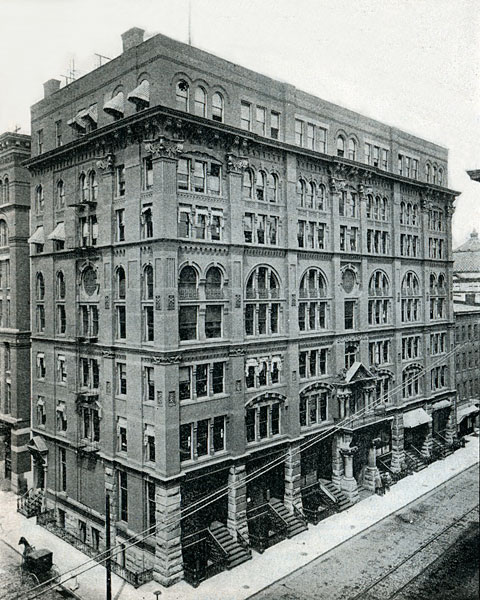
Board of Trade Building. Image source: private collection
The city's banks left the waterfront for larger, more sophisticated buildings up Main Street. With the Lackawanna railroad building tracks and sheds along the waterfront, tenants of the Central Wharf were forced to move and, in 1882, the Board of Trade through the Merchants Exchange entity constructed a building for $250,000 at Seneca and Pearl Street. Seven stories tall with a large basement level, it was designed by Milton Beebe and constructed of cast iron girders, cut stone, brick, and terra cotta. The fourth floor was dedicated to the Corn Exchange, which featured a "board room" 70 feet by 35 feet with a ceiling 23 feet high. One end featured a "ladies gallery."
In 1903, the Exchange became the Chamber of Commerce of Buffalo. And in 1904, a separate trade body was formed to reflect the status of grain trade in the city: the Corn Exchange of Buffalo.
On the floor of the Corn Exchange, sellers brought samples of their grain for examination by potential buyers for millers, processors, elevators and exporters. These buyers would make competitive bids for the grain.
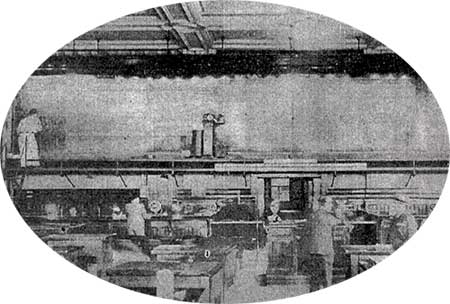 Image at left: The Corn Exchange Board in the Board of Trade Building, elevated blackboard and worker entering prices.
Image source: BECPL
Image at left: The Corn Exchange Board in the Board of Trade Building, elevated blackboard and worker entering prices.
Image source: BECPL
In 1916, Congress passed the United States Grain Standards Act which, in part, authorized the licensing of grain inspectors to apply the Agriculture Department standards. The Buffalo Corn Exchange, under the authority of the Agriculture Department, became employers of licensed grain inspectors.
The balcony of the trading floor was lined with large blackboards on which were recorded the latest prices for all grains traded on the floor of the Chicago Board of Trade and the month in which the trade was made. The use of ticker tape communications made this data as current as the boards in Chicago.
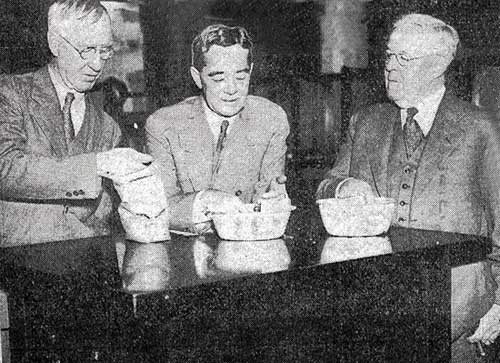
Corn Exchange members handling the product. Image source: BECPL
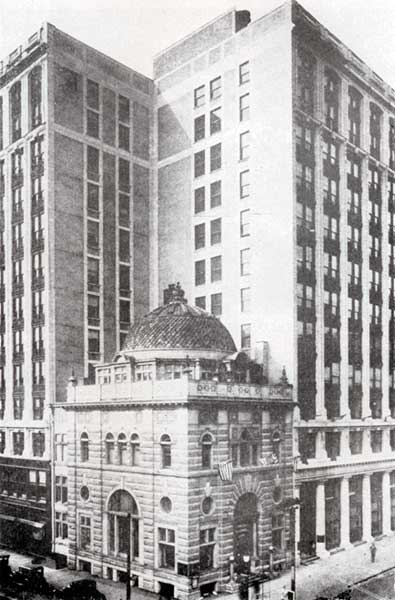
Chamber of Commerce Building surrounding the Bank of Buffalo. Image source: private collection.
In 1935, a new Chamber of Commerce building opened at Main and West Seneca street. As seen at left, it wrapped around the smaller Bank of Buffalo building.
The Corn Exchange occupied the 7th floor of the new building. In order to make the required high-ceilinged trading room, a portion of the 8th floor was removed. It was "the nerve center of the grain trade of Buffalo."
Membership was limited to "any male person of good character who is financially responsible." However, memberships were available only from members wishing to sell theirs. The price of membership in the 1950s was $2,000. Only individuals could be members, not a corporation, and the membership had to be approved by the Floor Committee and the Board of the Corn Exchange. By 1953, there were 75 members, 71 of whom were active.
The Exchange's Articles of Incorporation describe its services thus: to maintain an exchange, post accurate business information, to arbitrate disputes, to examine and inspect flour, grain, etc., and "to indicate just and equitable principles in trade."
[Quotations above from 1953 Buffalo Business magazine.]
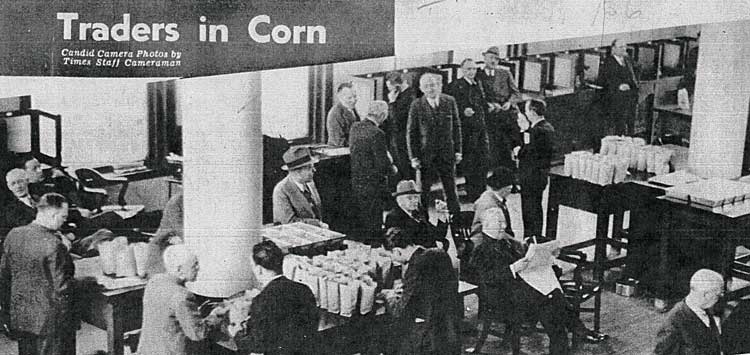
On the floor of the Corn Exchange in the Chamber of Commerce Building, 1936.Image source: BECPL
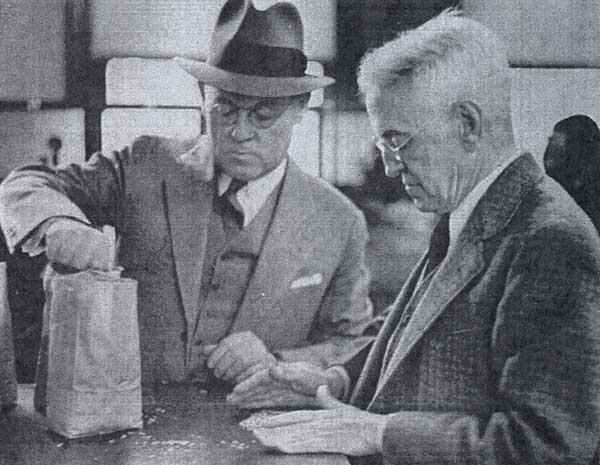
"George Wood (left) making a sale to William E. Ashe" Image source: BECPL
Buffalo was considered the king of the nation's flour milling industry from the 1930s through the 1960s, when 700 million bushels of grain moved rapidly in and out of Buffalo's 26 grain elevators. During that period, 4,000 employees worked in the grain mills. The Corn Exchange's 15 grain inspectors averaged 4,500 inspections per month. All of that would change in 1959...
